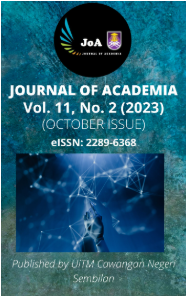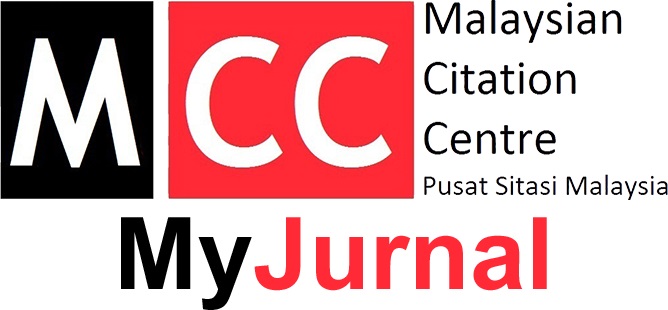DEVELOPMENT OF MOLECOOL GAME IN INSTAGRAM FOR CHEMISTRY MOL CONCEPT FUN LEARNING
Keywords:
Interactive Learning, Instagram, Mol concept, ADDIE Model, Game based learningAbstract
This study aims to develop the Molecool game in the Instagram application for a fun learning of the chemistry mole concept. The objective of the study is to determine the validity and identify the usability of the Molecool game from the constructs of usefulness, satisfaction, and ease. The study design is a developmental study that adapts the instructional design of the ADDIE model. The study population is among chemistry trainee teachers from Universiti Pendidikan Sultan Idris. A total of 107 respondents were selected through a simple sampling technique. A descriptive statistical analysis was employed in this study. The research instrument consists of a content validity form, questionnaire validity as well as a Molecool game usability questionnaire. The findings of the study were analyzed using SPSS software version 27.0.0.0 by observing at the values of frequency, percentage, mean and standard deviation. The results of the study show that the Molecool game has a good level of content validity through the percentage of expert agreement that exceeds 70%. The research findings for the three constructs in the usability questionnaire obtained a good mean value of 3.74 (sd = 0.397) for usefulness, 3.74 (sd = 0.387) for satisfaction and ease of use was 3.74 (sd = 0.397). This shows that the Molecool game has a good level of usability. The implication is that the Molecool game has the potential to be used as a teaching aid as well as a reinforcement activity for students in learning the standard content of the mole concept.
References
Abdullah, N. A., Mukhtar, N. E. Z. H., & Amran, N. (2020). Students' Perceptions towards Mathematical Softwares Based Learning/Persepsi Pelajar terhadap Pembelajaran Berasaskan Perisian Matematik. Sains Humanika, 12(3). https://doi.org/10.11113/sh.v12n3.1085
Al-Azawi, R., Al-Faliti, F., & Al-Blushi, M. (2016). Educational gamification vs. game-based learning: Comparative study. International journal of innovation, management, and technology, 7(4), 132-136.
Alshuaibi, M., Alshuaibi, A., Shamsudin, F., & Arshad, D. (2018). Use of social media, student engagement, and academic performance of business students in malaysia. International Journal of Educational Management, 32(4), 625-640. https://doi.org/10.1108/ijem-08-2016-0182
Anggraini, S. Y., Supriatna, A. R., & Soleh, D. A. (2021). Pengembangan Filter Game Edukasi Berbasis Instagram Pada Muatan IPA Kelas V Sekolah Dasar. OPTIKA: Jurnal Pendidikan Fisika, 5(2), 145-151. https://doi.org/10.37478/optika.v5i2.1070
Chen, C. H., & Law, V. (2016). Scaffolding individual and collaborative game-based learning in learning performance and intrinsic motivation. Computers in Human Behavior, 55, 1201-1212. https://doi.org/10.1016/j.chb.2015.03.010
Chen, C. H., Shih, C. C., & Law, V. (2020). The effects of competition in digital game-based learning (DGBL): a meta-analysis. Educational Technology Research and Development, 68, 1855-1873. https://doi.org/10.1007/s11423-020-09794-1
Cheung, L. (2016). Using the ADDIE model of instructional design to teach chest radiograph interpretation. Journal of Biomedical Education, 2016, 1-6.http://doi.org/10.1155/2016/9502572
Choong, F. Y. (2013). Kebolehgunaan terjemahan teknikal dan aplikasi konsepnya untuk menilai kualiti terjemahan teknikal [Unpublished doctoral dissertation]. Universiti Sains Malaysia.
Hartt, M., Hosseini, H., & Mostafapour, M. (2020). Game on: Exploring the effectiveness of game-based learning. Planning Practice & Research, 35(5), 589-604. https://doi.org/10.1080/02697459.2020.1778859
Harun, N., & Ghani, F. A. (2016). Kesahan dan kebolehpercayaan soal selidik amalan belajar pelajar berpencapaian rendah sekolah berasrama penuh. Jurnal Kemanusiaan, 14(3).
Hushaini, N. H., Osman, Z., Sarudin, A., & Redzwan, H. F. M. (2022). Level of Interest and Acceptance of Students Toward Gamification Teaching and Learning Material Malay Language Subjects in Primary School. Jurnal Pendidikan Bahasa Melayu, 12(2), 72-81.
Kamaruddin, M. I., & Mohamad, A. (2011). Kajian gaya pembelajaran dalam kalangan pelajar UTM. Journal of Educational Psychology and Counseling, 2(1), 51-77.
Krejcie, R. V., & Morgan, D. W. (1970). Determining sample size for research activities. Educational and psychological measurement, 30(3), 607-610. https://doi.org/10.1177/00131644700300030
Lund, A. M. (2001). Measuring usability with the use questionnaire12. Usability interface, 8(2), 3-6.
Malaysian Communications and Multimedia Commission. (2020, December). Internet Users Survey 2020: Infographic. Malaysian Communications and Multimedia Commission https://www.mcmc.gov.my/skmmgovmy/media/General/pdf/IUS-2020-Infographic.pdf
Mohamad, M., Ghazali, N., & Hashim, H. (2018). Secondary school students’ perceptions on the use of google+ towards improving esl writing skills. International Journal of Emerging Technologies in Learning (Ijet), 13(09), 224. https://doi.org/10.3991/ijet.v13i09.8479
Muslimin, M. S., Nordin, N. M., Mansor, A. Z., & Yunus, M. M. (2017). The design and development of MobiEko: A mobile educational app for microeconomics module. Malaysian Journal of Learning and Instruction, 221-255. https://doi.org/10.32890/mjli.2017.7804
Nawi, A. (2017). Potensi penggunaan aplikasi mudah alih (mobile apps) dalam bidang pendidikan Islam. O-JIE: Online Journal of Islamic Education, 2(2).
Nooraini & Jamaludin. (2017). Tahap Pengetahuan dan Kemahiran Terhadap Pengunaan Pautan Gerbang Maya dalam Pembelajaran Bahasa Melayu. Universiti Kebangsaan Malaysia
Pham, T. S. H., & Ahammad, M. F. (2017). Antecedents and consequences of online customer satisfaction: A holistic process perspective. Technological Forecasting and Social Change, 124, 332-342. https://doi.org/10.1016/j.techfore.2017.04.003
Salleh, M. A. M., Basir, K., Salman, A., & Omar, N. H. (2018). Media Sosial Dalam Transformasi Sistem Penyampaian Dan Kualiti Maklumat Kolej Kediaman. Prosiding Konvensyen Kepengetuaan dan Felo Penghuni Kolej Kediaman Universiti Awam Kebangsaan 2018.
Sreerambhatla, R. (2010). Application of Usability Concepts on Text Message Formatting [Unpublished doctoral dissertation]. Texas A & M University-Kingsville.
Widyastuti, E. (2019, March). Using the ADDIE model to develop learning material for actuarial mathematics. In Journal of Physics: Conference Series (Vol. 1188, No. 1, p. 012052). IOP Publishing. https://doi.org/10.1088/1742-6596/1188/1/012052
Downloads
Published
Issue
Section
License
Copyright (c) 2023 Journal of Academia

This work is licensed under a Creative Commons Attribution-NonCommercial-NoDerivatives 4.0 International License.












